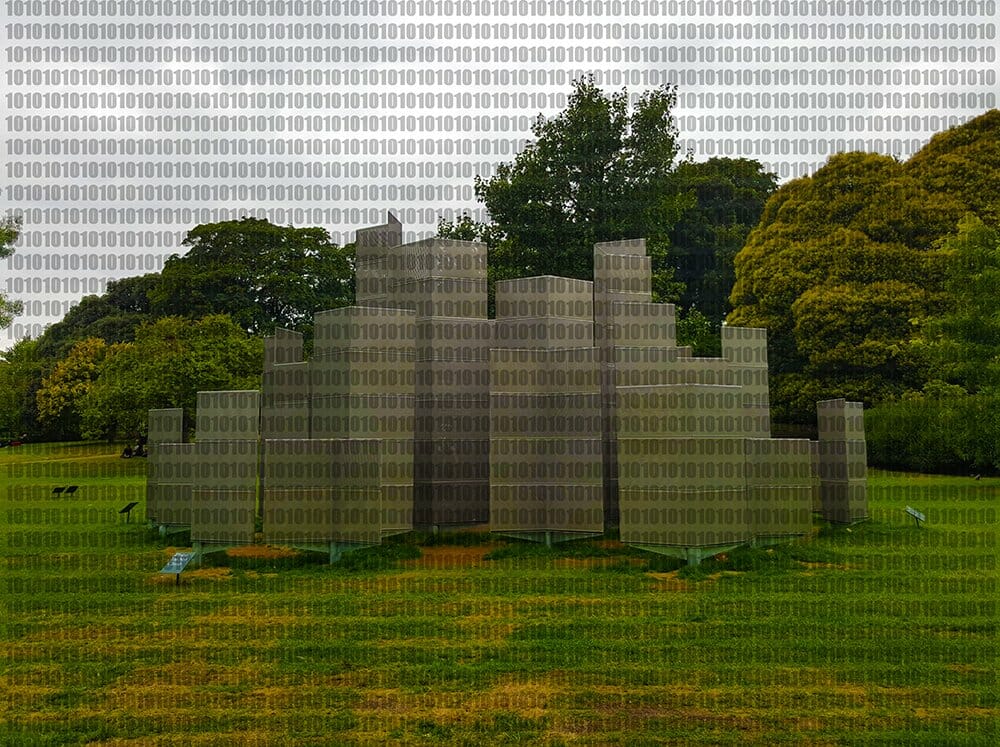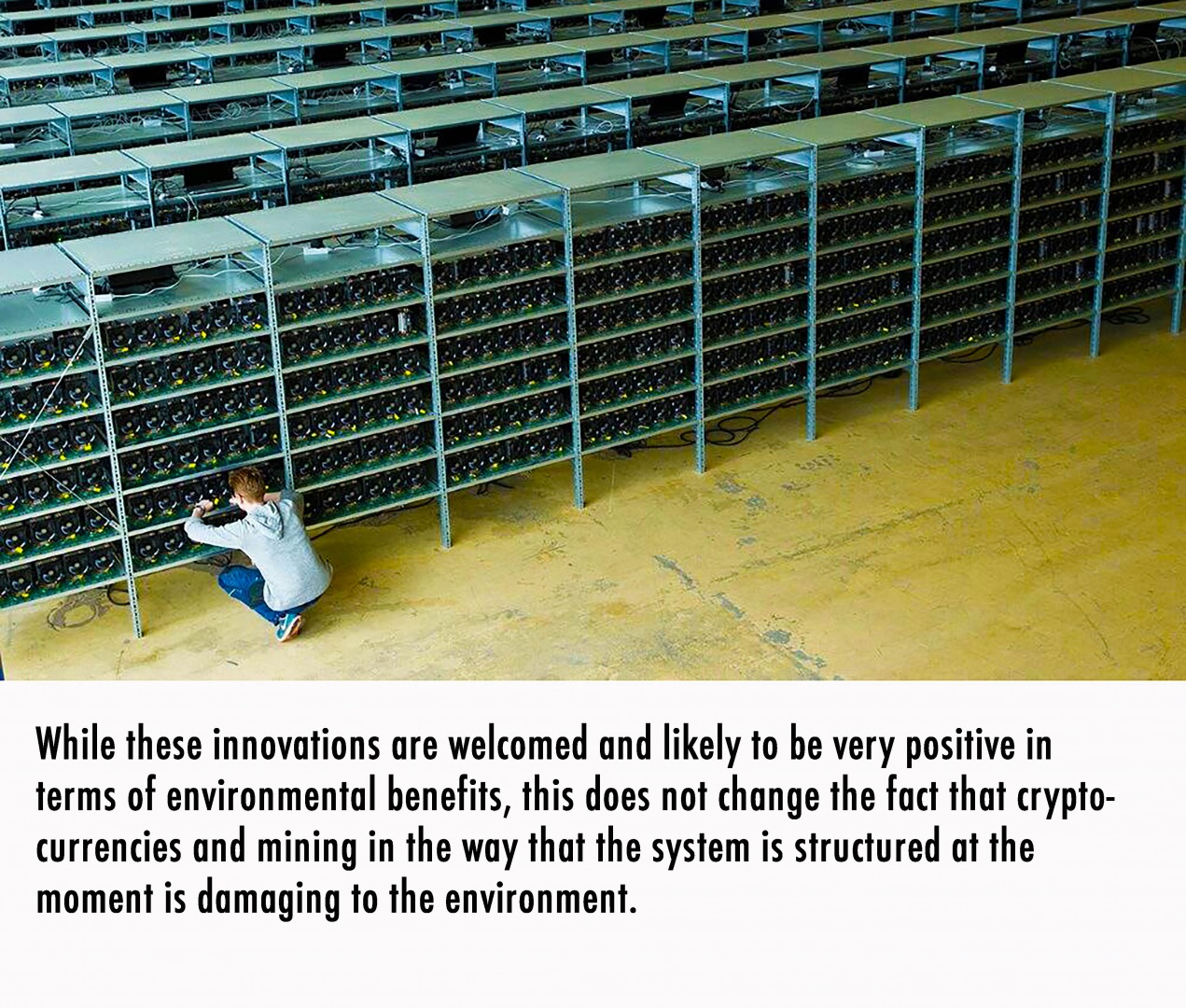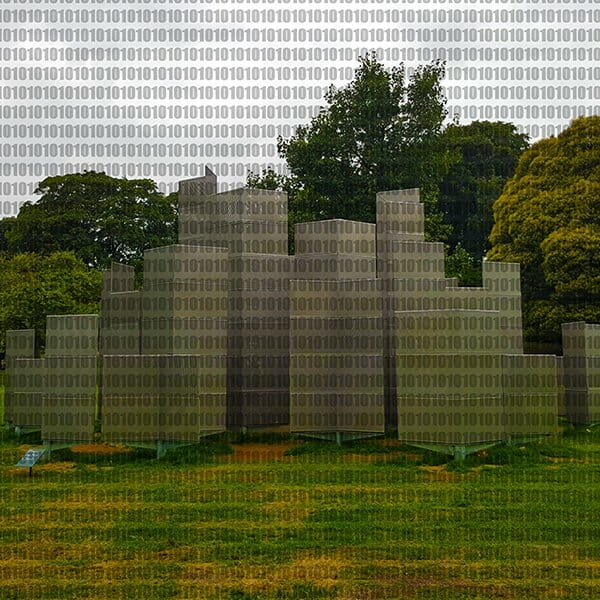
The SWOT guide to blockchain is a guide in 6 parts, where both the opportunities and challenges of blockchain are considered. Blockchain has the potential to be groundbreaking, offering opportunities and better solutions for a range of situations and industries worldwide. In the sixth part of this guide, we analyze the most important weakness of blockchain technology in our opinion: its consumption of energy. We also demonstrate how such a weakness can be transformed into a strength, if innovation is triggered in the blockchain community, towards finding sustainable and ecological alternatives of blockchain solutions.
By Maria Fonseca and Paula Newton
Bitcoin And The Environment
Increasingly, concerns about blockchain’s impact on the environment are rising to the fore. In 2018 it was reported that bitcoin uses the same amount of carbon dioxide in a year, as one million flights crossing the Atlantic. This cannot be ignored. The use of electricity to drive bitcoin is tremendous. Further statistics have emerged that have accentuated the point. For example, it was argued that in one month alone, the use of electricity by the bitcoin network was greater than that used by the whole of the Republic of Ireland. Since that time (November 2017) the use of electricity by bitcoin has only grown further. For anyone with even a moderate passing interest in the environment, this is of concern.
The whole bitcoin system is built around the use of electricity. Mining, using electricity, needs to occur for the system to operate. When miners are able to mine faster and more effectively – using more electricity through more powerful machines – the higher the chances re that a miner will get the biggest reward. Everyone is motivated to use more electricity to gain the highest rewards. The bigger the system gets, the more electricity is burned to support it. Estimates show that if the price of bitcoin rose to $50,000, electricity consumption would increase by ten times – which is clearly tremendous. Some believe this is not a major concern since bitcoin will not achieve such a value (though this is arguable) and due to the fact that it is likely that technology will be developed that allows mining that is more energy efficient. Indeed, mining computers have already increased in efficiency over time. Yet it is impossible to rule out ongoing and continual increases in demand for energy use, making blockchain an environmental concern for many.
But it isn’t all bad news in so far as the environment is concerned. Other industry analysts suggest that green cryptocurrencies could have a part to play. While to date, buying environmentally friendly items has generally been equated to paying more for them, changes are afoot with the rise of green cryptocurrencies. It is thought that such cryptocurrencies will be beneficial in terms of offering benefits for people making greener purchases, as well as driving innovation. The way that green cryptocurrencies work is that blockchain has the ability to track and monitor environmental performance by business or individuals. This can be saved and embedded into the system, and those that are more effective in this regard can be rewarded. On the other hand, consumers will be able to have increased confidence that green really means green.
2019: And Still Waiting for Green Cryptocurrencies
It was predicted that in 2018 green cryptocurrencies would start to have their day, based on environmental data built into blockchain. Energy companies were in some cases carrying out pilots for peer-to-peer energy transactions and platforms, used for trading. However, some benefits of energy savings have been found to lead to a so-called “rebound effect” where the benefits gleaned are offset by the fact that environmentally unfriendly behaviour occurs with the savings made that would otherwise be spent on energy. To counteract this, green cryptocurrencies could be built in such a way that would ensure that the benefits gained could only be offset against payments for green products and services.
While these innovations are welcomed and likely to be very positive in terms of environmental benefits, this does not change the fact that cryptocurrencies and mining in the way that the system is structured at the moment is damaging to the environment. It is not clear the extent to which green cryptocurrencies would in themselves use electricity that would offset the benefits gained from them. Overall, further innovation is required to ensure that mining technology improves to reduce the gigantic electricity used through undertaking these processes.

In What Ways Could Blockchain Support the Environment?
Blockchain, is more then cryptocurrencies though. It is also a way to develop softwares that are safer and theoretically distributed, as we have seen in other sections of this guide. How then, could Blockchain tech support the environment in. FutureThinkers have compiled the following practical examples that give readers a better picture of practical ways through which this technology could be used:
- Blockchain can be used to track environmental compliance and the impact of Treaties — decreasing fraud and manipulation.
- Donations to charities can be tracked to ensure that they are being attributed efficiently and as planned.
- Products can be tracked from origin to source. This can help reduce carbon footprints, increase ethical accountability and reduce unsustainable practices.
- Schemes such as recycling can be incentivised by offering token rewards to participants.
- Peer to peer localised energy distribution is possible, rather than the current system of a centralised hub.
- Blockchain can also be used to track the carbon footprint of products, which can then determine the amount of carbon tax to be charged.
Conclusion
Over this comprehensive SWOT analyses of Blockchain, we have described the challenges, strengths, opportunities, and weaknesses of Blockchain. One thing is certain, blockchain tech is here to stay. We live in a world increasingly digitized and interconnected, and with the rise of the Internet of Things, blockchain tech, due to its focus on trust, accountability and its distributed character, might be the perfect technology to structure the global digital networks of the future.
One cannot forget though, that there are also various problems and weaknesses that need to be tackled. And one cannot either, just take at face value, that this technology is better and fairer, just because it’s disruptive.
Solutions will certainly appear along the way, as more people experiment with putting into practice its theoretical concepts. Our hope is that blockchain will have positive implications for the implementation of a fairer and more sustainable circular economy, that will better tackle environmental issues, inequality and other problems of our current broken system. In order for that to happen, calls for, from all of us, a high doses of attention to detail, and critical reasoning, while examining this technology. Only by actively speaking out what is going astray from its initial promises, and acting quickly to correct and prevent problems, can we build a system, eventually built with blockchain, that will provide us with a more connected and beautiful world.
The SWOT Guide to Blockchain Part 1
The SWOT Guide to Blockchain Part 2
The SWOT Guide to Blockchain Part 3
The SWOT Guide to Blockchain Part 4
The SWOT Guide to Blockchain Part 5

Maria Fonseca is the Editor and Infographic Artist for IntelligentHQ. She is also a thought leader writing about social innovation, sharing economy, social business, and the commons. Aside her work for IntelligentHQ, Maria Fonseca is a visual artist and filmmaker that has exhibited widely in international events such as Manifesta 5, Sao Paulo Biennial, Photo Espana, Moderna Museet in Stockholm, Joshibi University and many others. She concluded her PhD on essayistic filmmaking , taken at University of Westminster in London and is preparing her post doc that will explore the links between creativity and the sharing economy.










